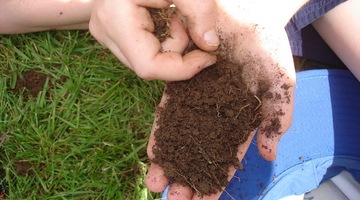

Easy care sheep, developed by AgResearch, have been selectively bred to be more productive and less labour-intensive for farmers. Our collection of resources on this reveals more about these ...
READ MORE

Easy care sheep developed by AgResearch were produced using selective breeding. Find out more about selective breeding and why scientists use this method to breed the easy care traits. Rights: M ...
READ MORE

New Zealand sheep farming has been heavily influenced by fluctuations in demand and returns for meat and wool. Discover what other factors have contributed to this industry since the first sheep ...
READ MORE

Students consider the harms and benefits (consequences) of easy care sheep breeding. Purpose Students use a round robin activity and PMI worksheets to generate ideas about the effect of selective ...
READ MORE

Cows are ruminants – mammals with specialised digestive systems that use fermentation processes to gain nutrients from plant material. Cattle, sheep, horses, deer, goats and camels are also ...
READ MORE

Earthworms are useful indicators of soil health. This project aims to capture information on earthworm abundance and species distribution throughout New Zealand. Information provided will be used ...
READ MORE

This citizen science project wants your assistance to extract information from various climate scientific graphics to help combat misinformation and support scientific communication. Using this ...
READ MORE

Weddell seals and orca are among the top predators in the Ross Sea region of Antarctica, and more than half of the Weddell seal population can be found in the Ross Sea. Information about changes ...
READ MORE

Students investigate silage production and test a stream to see if run-off from silage is polluting it. Students then produce a pamphlet of their findings to educate the community. Purpose To ...
READ MORE

Lincoln University has produced resources for year 11 students that focus on dairying in New Zealand. The purpose of the resources is to increase students’ understanding about the science and the ...
READ MORE

This case study was based on a biotechnology unit that focused on investigating silage and the possible effects of run-off on a small rural stream. This case study explores why this was an ...
READ MORE
When dags form on a sheep’s backside, it makes them susceptible to flystrike, which occurs when blowflies lay maggots in their fleece. Dr David Scobie describes the problem flystrike causes and ...
READ MORE
Easy care sheep have been developed using selective breeding. Here, Dr David Scobie of AgResearch compares this traditional breeding method with the more modern cloning and genetic modification ...
READ MORE
The heritability of a trait is determined by how much of it is inherited from the parents and how much is created by the environment. Dr David Scobie explains how heritable some traits are, some ...
READ MORE

This interactive shows the techniques used to make transgenic animals at AgResearch in New Zealand. Molecular biology techniques such as restriction enzyme digests, ligation, tissue culture and ...
READ MORE

This interactive shows how scientists confirm a newborn calf is a transgenic animal. View the steps AgResearch scientists use to produce a transgenic cow in this related interactive.
READ MORE

Ruminants like cows have an amazing digestive system. They are able to digest cellulose found in plant material – something humans cannot do. Drag and drop the text labels onto the boxes next to ...
READ MORE